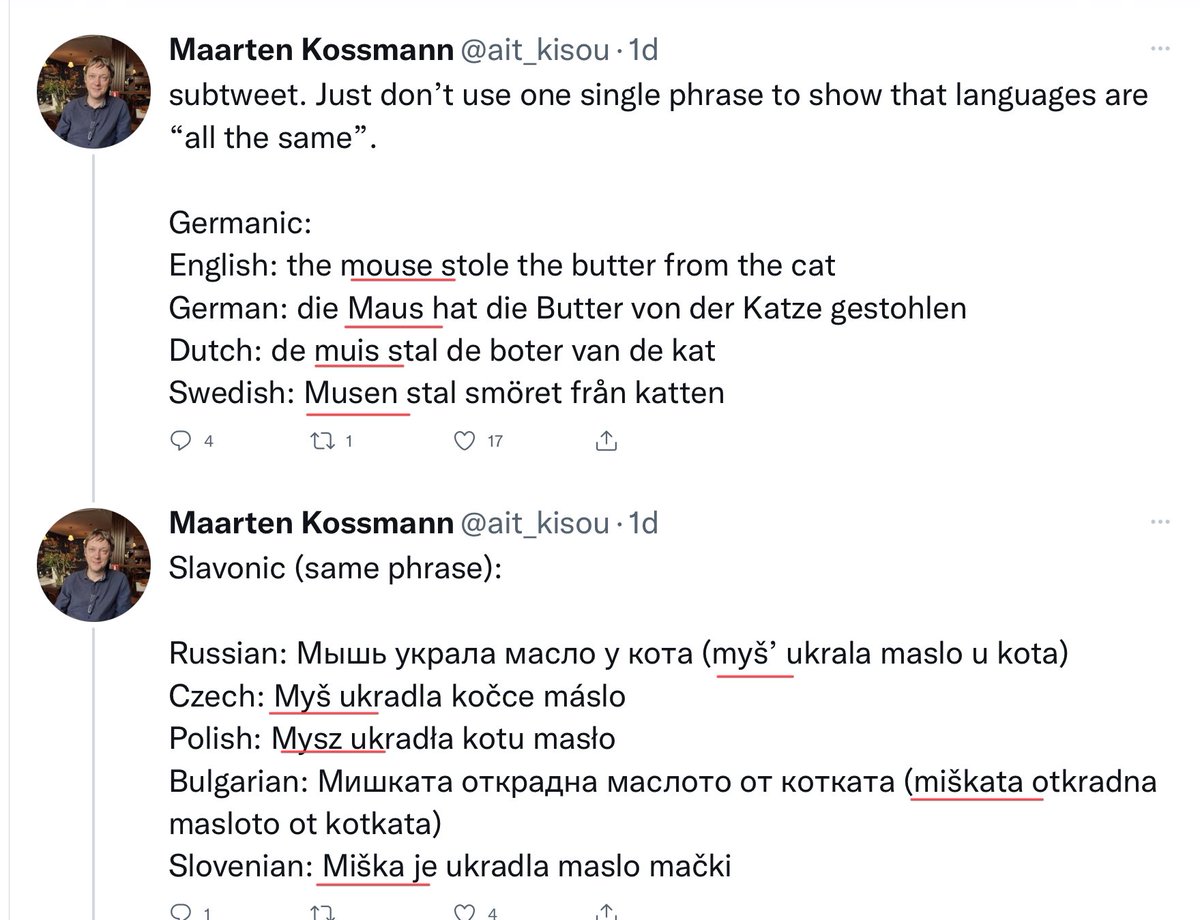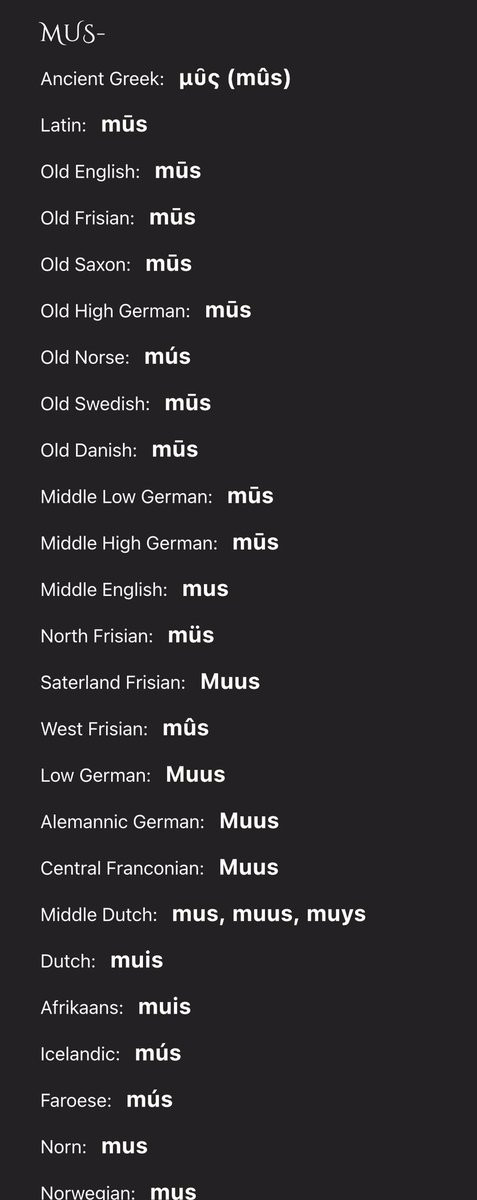Srikanth1200 Authors प्वालः । pvaal
7 days
30 days
All time
Recent
Popular
Of Men, Mice & Languages!
Inspired by the thread below, I am pleased to share the fruits of my labour!😀
Presenting my AMT - Aryan Mouse Theory*!
आर्यमिश्रान् विज्ञापयामि अस्मिन् विषये।
While this may seem in jest, the data👇🏼shown is all valid
[*channeling my inner Witzel}
As the screenshot shows, the word for Mouse is remarkably conserved across multiple languages
German - Maus
Dutch - Muis
Swedish - Musen
Russian - myš’
Czech - Myš
Polish - Mysz
Bulgarian - miškata
Slovenian - Miška
Samskritam मूषिकः । Mushika | Mushaka

Here is a list of 70+ languages with the word for ‘Mouse’
In fact, total list may be 100+ languages!
Quite remarkable!
But why?
Mice & humans in fact, go a long way back
The history of origin & spread of Mouse is an important clue to the spread of human beings & languages

१ Mice originated in India & SEA
२ 10,000 years ago had split to 4 populations with non-overlapping range in India
३ Mouse started commensalism only after agricultural communities started
४ domesticus spread to fertile crescent
५ musculus spread to China
६ 4000 BP ->Europe

This is the map highlighting the spread of mice

Inspired by the thread below, I am pleased to share the fruits of my labour!😀
Presenting my AMT - Aryan Mouse Theory*!
आर्यमिश्रान् विज्ञापयामि अस्मिन् विषये।
While this may seem in jest, the data👇🏼shown is all valid
[*channeling my inner Witzel}
This is my attempt. I guess, one can clearly see lexical cognates, but the morphology is rather different.
— S\u0101\u0301mapriya\u1e23 \U00010a2f\U00010a0c\U00010a28\U00010a24\U00010a3f\U00010a2a\U00010a01\U00010a29\U00010a0f \U00011032\U00011038\U0001102b\U00011027\U00011046\U0001102d\U0001103a\U0001102c\U00011002 (@samopriya) January 24, 2022
Lithuanian:
Di\u1ebdvas d\xe3v\u0117 m\xf9ms dant\xecs, di\u1ebdvas d\xfaos m\xf9ms d\xfaon\u0105.
Sanskrit:
D\u0113v\u1e53 dada\xfa n\u014d d\xe1nt\u0101, d\u0113v\u1e53 d\u0101sy\xe1ti n\u014d d\u02b0\u0101n\u0101\u0301m.
\u0926\u0947\u0952\u0935\u094b \u0926\u0952\u0926\u094c \u0928\u094b\u0952 \u0926\u0928\u094d\u0924\u093e\u0951, \u0926\u0952\u0935\u094b \u0926\u093e\u0952\u0938\u094d\u092f\u0924\u093f\u0951 \u0928\u094b\u0952 \u0927\u093e\u0952\u0928\u093e\u092e\u094d\u0964 https://t.co/uLlnGmioNv
As the screenshot shows, the word for Mouse is remarkably conserved across multiple languages
German - Maus
Dutch - Muis
Swedish - Musen
Russian - myš’
Czech - Myš
Polish - Mysz
Bulgarian - miškata
Slovenian - Miška
Samskritam मूषिकः । Mushika | Mushaka

Here is a list of 70+ languages with the word for ‘Mouse’
In fact, total list may be 100+ languages!
Quite remarkable!
But why?
Mice & humans in fact, go a long way back
The history of origin & spread of Mouse is an important clue to the spread of human beings & languages

१ Mice originated in India & SEA
२ 10,000 years ago had split to 4 populations with non-overlapping range in India
३ Mouse started commensalism only after agricultural communities started
४ domesticus spread to fertile crescent
५ musculus spread to China
६ 4000 BP ->Europe

This is the map highlighting the spread of mice

